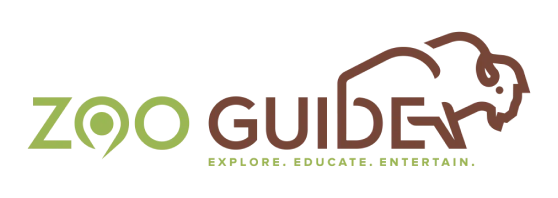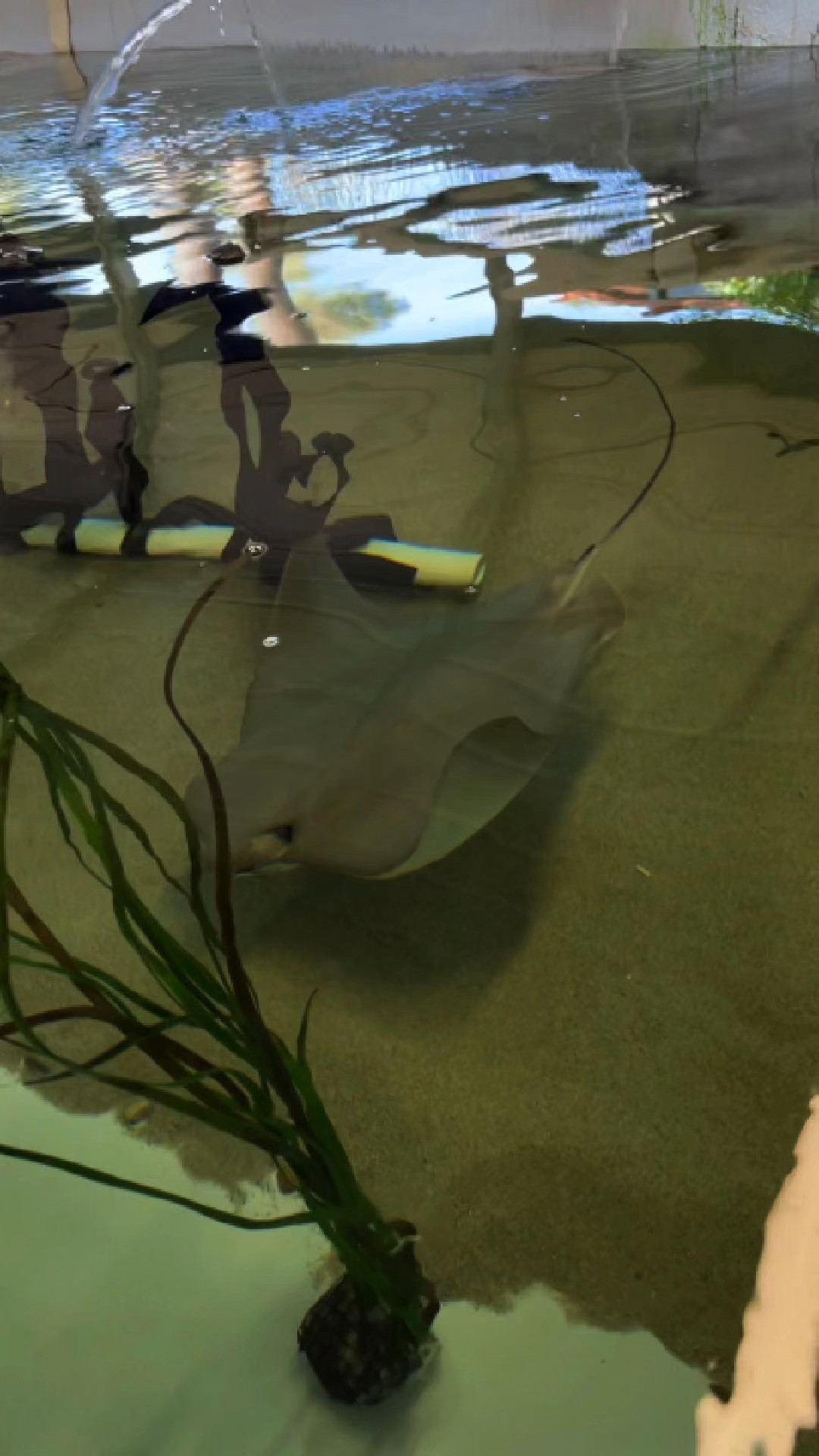- The anatomy and behavior of Cownose rays
- The significance of veterinary care for aquatic animals
- Procedures involved in treating aquatic injuries and conditions
- The importance of public awareness and education in wildlife conservation
- Veterinary advancements in the care of marine species
Cownose rays (Rhinoptera bonasus), well-known for their graceful movements and unique physiology, are members of the family Myliobatididae. These flat-bodied elasmobranchs inhabit coastal waters throughout the western Atlantic. Largely recognized by their distinctive head shape and long, sweeping pectoral fins, they exhibit intriguing behavior, such as forming schools and engaging in foraging strategies. The recent necessity for a surgical procedure on one of our female Cownose rays, due to a benign growth near her mouth, underscores the need for specialized veterinary interventions in managing both their health and well-being.
Veterinary care for aquatic animals is an integral part of marine conservation efforts. The aquatic environment poses distinct challenges for animal health. Unlike terrestrial species, aquatic animals cannot be easily restrained or anesthetized with traditional methods. Specialized best practices are essential for ensuring safe and effective treatment options. Veterinary teams must account for factors such as water quality, animal stress, and the suitability of anesthetics. This particular case with our Cownose ray illustrates how advanced veterinary techniques contribute to the health of marine species.
When it comes to procedures for treating aquatic animals, there are several key steps involved. First, it is crucial to perform a thorough assessment of the animal’s health. In our recent experience, the ray was meticulously observed for any signs of distress or discomfort. The veterinary team conducted a physical examination to evaluate the benign growth. This included checking for any additional concerns, such as changes in appetite or behavior. Following this assessment, diagnostic imaging such as ultrasound might be employed to determine the extent of the growth and confirm its benign nature. This technology not only assists in treatment planning but also helps to avoid unnecessary surgical interventions.
Once potential treatment options are established, the next phase involves preparing the animal. For our Cownose ray, this meant ensuring that the water quality in her tank met specific standards, reducing stressors, and minimizing disturbances in her environment. Preparing the tank for surgery is a critical step as it affects the overall welfare of the animal during recovery. A quiet and calm environment helps reduce anxiety, facilitating a smoother procedure.
The actual surgical process involves specific protocols adapted for aquatic species. Anesthesia for marine life often includes a concoction of agents that can be administered through water. This is particularly effective for fish species, including rays. Once sedated, the veterinary team can safely access the growth without causing undue harm to the ray. The precision with which such procedures are conducted reflects the dedication of the veterinary staff to animal health. During surgery, close monitoring of vital signs is essential, with adjustments made to anesthesia levels as needed.
The recovery phase is equally important. After the surgical removal of the benign growth, our female Cownose ray required a controlled environment to recuperate. The staff closely monitored her for signs of stress or complications and ensured that she was eating properly. The role of a qualified veterinary team cannot be overstated at this stage; they play a vital part in ensuring that the ray resumes normal behavior and health.
Public awareness and education play a critical role in wildlife conservation. Initiatives aimed at educating the public about marine species can significantly influence conservation efforts. People who understand the behaviors and needs of aquatic animals are more likely to engage in conservation efforts, whether through responsible tourism, supporting marine protected areas, or advocating for policies that benefit marine ecosystems. By sharing insights from cases like our Cownose ray’s surgical procedure, we can foster a deeper appreciation for the complexities of marine life and the importance of their health.
Advancements in veterinary science further enhance our capacity to care for marine species. Organizations that focus on aquatic veterinary care have developed protocols and practices specifically designed for the needs of marine fauna. Innovations include improved anesthetic methods, new surgical techniques, and the use of non-invasive diagnostic tools. These advancements facilitate better health outcomes for species facing threats from habitat loss, pollution, and climate change. Keeping abreast of developments in veterinary medicine allows for effective treatment strategies, ensuring that aquatic animals thrive in their environments.
Additionally, the integration of technology into veterinary practices has revolutionized care for aquatic animals. Smart monitoring systems can track vital signs in real-time during surgical procedures, thereby providing immediate feedback to veterinary staff. Drone technology can be employed for monitoring wild populations, offering insights into health trends and behavioral patterns.
The necessity of comprehensive veterinary care, especially for specialized species like Cownose rays, reinforces the concept of holistic ecosystems. Healthy populations of Cownose rays contribute to their respective habitats, shaping the ecology of coastal environments. Healthy rays aid in the balance of marine ecosystems by foraging effectively, which can prevent the overpopulation of certain invertebrate species. Their presence is not simply about their survival; it directly influences the health of the broader marine biology.
The case of our female Cownose ray emphasizes the synergy between veterinary science, public education, and environmental stewardship. Collaboration between veterinarians, conservationists, and the public can result in healthier animal populations and ecosystems. Outreach programs designed to engage local communities about the challenges facing marine life play an instrumental role in advocacy and outreach efforts.
Marine conservation is facing numerous challenges, but public support and engagement can make a notable difference. Through education initiatives that underscore the importance of local wildlife, community members are more likely to participate in conservation efforts. Simple actions taken by individuals can collectively lead to significant environmental impacts, promoting healthier ecosystems for generations to come.
Veterinary care for aquatic animals not only plays a role in individual health but also connects to broader conservation strategies. Every successful treatment, like the one performed on our female Cownose ray, highlights the importance of consistent veterinary practice and public awareness in sustaining marine biodiversity.
Focusing on the health of aquatic species like Cownose rays equips us with vital knowledge about maintaining ecosystem health. As stewards of the environment, we are charged with the responsibility of protecting aquatic populations, which directly impacts humanity.
Through understanding the challenges and the need for veterinary interventions, we empower ourselves to advocate for policies and practices that ensure the well-being of marine species. Efforts to fund research and educational initiatives can lead to a deeper public interest in marine wildlife health and conservation.
As we move forward, the combination of veterinary advancements, public involvement, and effective management strategies will be pivotal for the future of Cownose rays and their ecosystems. This case serves as a reminder that while aquatic life can face challenges, concerted efforts can lead to healing and improved health. Each successful procedure not only restores the animal’s health but also reinforces the potential for positive outcomes in marine conservation endeavors.
*****
Source Description
Recently, one of our female Cownose rays needed a procedure performed for a benign growth near her mouth. Check out how we perform vet procedures on our aquatic animals.


